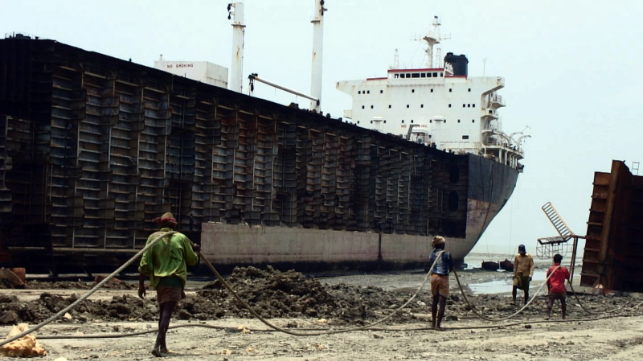Demolition of Product Tankers on Pace to Break 11-Year Record

Unfavorable freight rates in the oil product market coupled with an uncertain outlook and strong demand for steel are driving the demolition rate for product tankers toward record levels according to a new analysis from BIMCO. The shipping industry trade association forecasts that demolitions of product tankers could reach levels not seen since 2010 and if the oil spot market continues to be depressed the trend could spread to crude oil tankers.
BIMCO’s analysis shows that in the first four months of 2021, the amount of oil product tanker capacity sold for demolition has already reached the total capacity scrapped in both 2019 and 2020. They believe that unfavorable freight rates are the key contributor noting that if the current pace continues 2021 could break records for the total capacity removed for the market.
“Demolition of oil product tankers is heading for an 11-year high if the current pace continues for the rest of the year,” says Peter Sand, BIMCO’s Chief Shipping Analyst. The rise in demolition sales of oil product tankers in 2021 Sands says is noteworthy, although it comes from a very low base, whereas the amount of demolished crude oil tanker capacity has so far failed to impress the market.
After the initial two months of 2021 saw a total of just 11 oil tankers being sold for demolition, BIMCO highlights that March and April both had 1m dwt oil tanker capacity being retired. Year-to-date 10 crude oil and 38 oil product tankers have left the active trading fleet. Crude oil cargo carrying capacity has been reduced by 1.45 million dwt compared to 1.25m dwt of oil product tankers. By comparison, in 2019 and 2020, each year 1.2m dwt of oil product tanker capacity was demolished.
BIMCO believes that the current rate of demolition of oil product tankers stands out. At its current pace, by the end of 2021 more than two percent of the active oil product tanker fleet will have been sold for demolition.
The pace of sales however is moving in different directions between product and crude tankers. Despite a pick-up in demolitions of crude oil tankers in March and April of this year, due to the overall size of the market, the pace remains low. Currently, the 2021 volume of demolition for crude oil tankers is at 60 percent of what was demolished in 2020.
BIMCO forecasts, however, that the rate of crude oil tanker capacity demolitions in 2021 will exceed the levels of the past two years. Low earnings in the spot market will drive owners’ decision to sell and “If the spot market continues to bleed for another year with no real improvement in earnings, demolition will accelerate in 2022,” says Sand.
Ships are demolished when earnings are low and higher earnings are not in sight in the near-term future, explains BIMCO. Owners sell not because of high demolition prices but when the freight markets are at low levels for prolonged periods and second-hand value is lower than demolition prices.
While profits peaked in September 2020 and have been weak for the past six months, the market lags in part as owners wait for signs of a potential rebound in rates. “Oil tanker owners made a lot of money during the boom-periods of 2019 and 2020,” says Sand. “No one is short on cash and find themselves actively seeking asset liquidations.”
Also contributing to the strength in the demolition market is a lack of scrap metal that has pushed the demolition prices higher across the board. In Bangladesh, for example, the average price paid for steel recently reached an all-time high of $520 per Light Displacement Tonnage. Demolition prices, however, are often ship specific, depending on factors such as the content, quality, and condition of the steel. One factor that has been depressing sales are travel restrictions due to the pandemic which makes it harder when the scrapper has to re-staff a dead ship and sail it to the breaker’s yard.
